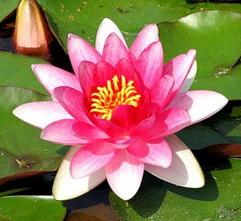“Don’t Tell me how educated you are, tell me how much you have traveled”, say the wise. Wisdom comes from experience; travel is the only thing you buy to make you richer! We are Prakriti Inbound, here to show you the World behind the obvious. Travel is about life, freedom and the joy of discovery, & we are committed in making your travel as you would want it. With us as your travel partner, you will always get “More World Per Mile.” Prakriti: Your World Travel Partner
Wednesday, December 16, 2009
A Travel Guide to Bangladesh
Friday, December 11, 2009
RANGAMATI: The Pristine Beauty
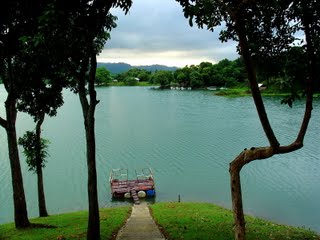 As everyone knows Rangamati is the most scenic spot to visit in Bangladesh. Rangamati is popularly known as Lake City. It is surrounded by alluring forests, hills and many attractive attractions. This is the best spot for Eco-tourism. Rangamati is situated 77km from Chittagong. It is connected by stream from Kaptai. This is the place where you can visit any time. The most amazing time to visit this place is rainy season. During this time when waterfalls, rivers were in full boom with its amazing scenery, lovely lakes, its immense flora and fauna makes Rangamati one of the favorite tourist spot in Bangladesh. The flora and fauna of Rangamati were spreading along a large area with varied types of plantation. Rangamati is the place where you could spend your time with family and beloved ones while viewing the natural beauty. There are so many attractions like Hanging Bridge, Kaptai Lake, Tribal Cultural Museum, a different variety of tribal’s, lakes, textile products, etc. You can spend time here while fishing, boating also.
As everyone knows Rangamati is the most scenic spot to visit in Bangladesh. Rangamati is popularly known as Lake City. It is surrounded by alluring forests, hills and many attractive attractions. This is the best spot for Eco-tourism. Rangamati is situated 77km from Chittagong. It is connected by stream from Kaptai. This is the place where you can visit any time. The most amazing time to visit this place is rainy season. During this time when waterfalls, rivers were in full boom with its amazing scenery, lovely lakes, its immense flora and fauna makes Rangamati one of the favorite tourist spot in Bangladesh. The flora and fauna of Rangamati were spreading along a large area with varied types of plantation. Rangamati is the place where you could spend your time with family and beloved ones while viewing the natural beauty. There are so many attractions like Hanging Bridge, Kaptai Lake, Tribal Cultural Museum, a different variety of tribal’s, lakes, textile products, etc. You can spend time here while fishing, boating also.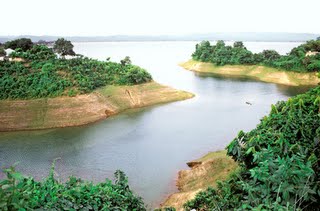
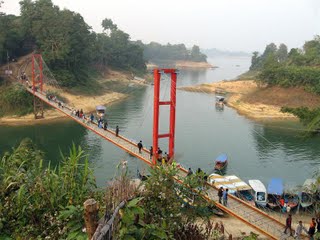
Friday, November 20, 2009
National Symbols of India
National Flag Of India:
On 22 July 1947, the design of the National Flag was adopted by the
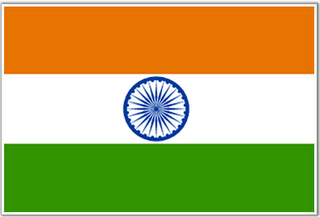 Constituent Assembly of India. The design of National flag is a horizontal tri-colour of deep saffron at the top, white in the middle and dark green at the bottom in equal proportion. In the centre of the white band is a navy-blue wheel which represents the chakra. It has 24 spokes. The national flag of India is also known as “Tiranga”
Constituent Assembly of India. The design of National flag is a horizontal tri-colour of deep saffron at the top, white in the middle and dark green at the bottom in equal proportion. In the centre of the white band is a navy-blue wheel which represents the chakra. It has 24 spokes. The national flag of India is also known as “Tiranga”Every colours of Indian Flag describes some meaning. The saffron colour denotes the strength and courage. The white in the centre is light, the path of truth to guide our conduct. The green shows our relation to soil, our relation to the plant life here on which all other life depends. The Ashoka Wheel in the center of the white is the wheel of the law of dharma.
National Anthem:
The national anthem of India first written in Bengali language by Rabindranath Tagore, later it was adopted in Hindi version by the Constituent Assembly as the national anthem of India on 24 January 1950. The song jana- gana-mana was beautifully written by the legend Rabindranath Tagore.
National Song of India:
National Emblem of India:
The national emblem of India is a replica of the Lion at Sarnath, near Varanasi.
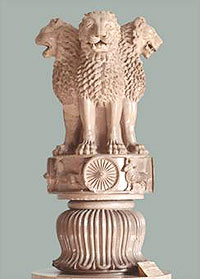 The national symbol represent modern India`s declaration of its ancient commitment to world peace and goodwill. On January 26, 1950 the emblem was adopted by the Indian Government. It has four lions, resting on a circular abacus. The fourth lion is hidden. The emblem symbolizes courage, power. The abacus is enclosed with lion to guide the north direction, the elephant to guide the east direction, the horse of the south direction and bull to guide the west direction. Carved out of a single block of polished sandstone, the capital is crowned by the Dharma Chakra. The abacus is situated in lotus explains the inspiration for creativity and source of life. The words “Satyameva Jayate” which means “Truth Alone Triumphs”, inscribe below the abacus in Devanagari script.
The national symbol represent modern India`s declaration of its ancient commitment to world peace and goodwill. On January 26, 1950 the emblem was adopted by the Indian Government. It has four lions, resting on a circular abacus. The fourth lion is hidden. The emblem symbolizes courage, power. The abacus is enclosed with lion to guide the north direction, the elephant to guide the east direction, the horse of the south direction and bull to guide the west direction. Carved out of a single block of polished sandstone, the capital is crowned by the Dharma Chakra. The abacus is situated in lotus explains the inspiration for creativity and source of life. The words “Satyameva Jayate” which means “Truth Alone Triumphs”, inscribe below the abacus in Devanagari script.National Tree:
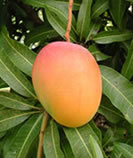 National Fruit:
National Fruit:National Bird:
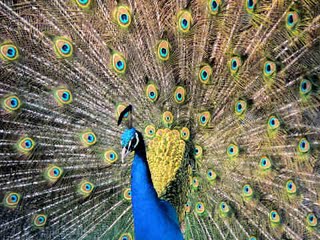 scrub and deciduous forests. It eats insects, fruits, seeds, berries, drupes small mammals and reptiles. The peacock represents beauty, pride and grace. The Indian male Peafowl is known as Peacock and female known as Peahen. Peacock is the most noticeable bird. The peacock is characterized by an extraordinary crest and colored train. The feathers in the train are having spots like eyes. The train consisted of more than 60% of the total body. The truth about the beauty of peacock is world renowned but their voice is extremely harsh. The male of this species is more beautiful. They expand their feathers in the months of monsoon and dance which added more to its beauty. The sight of dancing of peacock is very gorgeous. Peacock had a major role in mythology. It was considered that God Kartik, rides on its back and also feather of peacock lies in the Lord Krishana`s Crown. Peacocks are protected under the Indian wildlife protection act, 1972. The population of peacock is maximum in the arid zone of Rajasthan.
scrub and deciduous forests. It eats insects, fruits, seeds, berries, drupes small mammals and reptiles. The peacock represents beauty, pride and grace. The Indian male Peafowl is known as Peacock and female known as Peahen. Peacock is the most noticeable bird. The peacock is characterized by an extraordinary crest and colored train. The feathers in the train are having spots like eyes. The train consisted of more than 60% of the total body. The truth about the beauty of peacock is world renowned but their voice is extremely harsh. The male of this species is more beautiful. They expand their feathers in the months of monsoon and dance which added more to its beauty. The sight of dancing of peacock is very gorgeous. Peacock had a major role in mythology. It was considered that God Kartik, rides on its back and also feather of peacock lies in the Lord Krishana`s Crown. Peacocks are protected under the Indian wildlife protection act, 1972. The population of peacock is maximum in the arid zone of Rajasthan. National Animal:
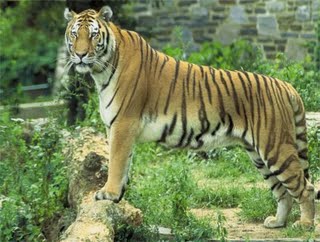
The National animal of India is called The Royal Bengal Tiger. India`s wealth in the field of wildlife is represent by Tiger. The main features of Tiger are incredible power, immense strength, keen predator, grace, intelligence made Tiger called as the lord of jungles and also selected as National Animal.
National Game:
Hockey is the national game of India. In 1927, the Indian Hockey Federation gained global affiliation and joined with International Hockey Federation. Hockey is the game in which India had such a great record. Due to Hockey India got its position in the field of sports and won 8 Olympic gold medals. The best period in Hockey in India was the period from 1928 - 1956 when India won 6 consecutive gold medals in the Olympics. The best player was Major Dhyanchand who made several records in Hockey.
Thursday, November 12, 2009
The Taj Mahal: One of The Most Beautiful Architectural Creation of a Love Story
They set stone flowers in the marble.
That by their color, if not their perfume, surpasses real flowers.
---Abu Talib Kalim
If a visit to India is a crown, missing the Taj is as good as missing the crown's finest jewel!
The Taj Mahal is the culmination of architectural achievements of India under the Mughal rule. Arguably the finest piece of architecture in the medieval world, the Taj Mahal is a mausoleum built by the Mughal emperor Shah Jahan over the tomb of his beloved wife Mumtaz Mahal. Starting from 1632 it took about 20 years to take shape, in the hands of 20,000 of the known world's finest craftsmen.
The Mughal sovereign had several wives, but Mumtaz Mahal was his favorite and most beloved. His companion and confidant on royal matters, she died while giving birth to a daughter. The bereaved emperor wanted to commemorate their love in the form of a stone architecture that will have no parallel in the whole world. He summoned the best brains from far reaches of his expansive empire and beyond to create the incomparable marvel. The Mughal period had seen the creation of brilliant architectural wonders, the Agra Fort, The Red Fort, The Fatehpur Sikri, to name just a few, but nothing compares to the sublime beauty of the Taj Mahal. Created out of the very best quality marble, the pristine white monument when seen against the backdrop of the moonlit sky seems like dream.
The Taj Mahal was declared a World Heritage Site by UNESCO in 1983 and named among the new Seven Wonders of the World. The masterpiece attracts close to 30 million visitors annually of which more than 200,000 tourists from abroad. One visit to the monument and the experience haunts you for the rest of your life.
The Taj Mahal is in the city of Agra located just 200 km from Delhi, the capital of India. Situated on the west bank of River Yamuna, Agra was once the flourishing capital of the Muslim rulers of India.
If you are looking for a one point destination for tourism guidance and great deals for a visit to the Taj Mahal, click on www.t2india.com. T2India offers a classic blend of modernity with the famed Indian hospitality. We are partners with the most luxurious hotel chains in India; we offer tour packages, the most experienced guides and all this at an astonishing price.
Visit www.t2india.com and plan the sojourn of your lifetime.
Wednesday, November 04, 2009
It is possible to bring value to producers through MICE
Thursday, October 08, 2009
Commonwealth 2010 games
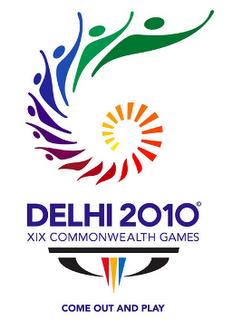 New Delhi is cherished with pride to host the Commonwealth Games 2010.This time we Indians got a chance to organize Commonwealth 2010 games. We are extremely cherished with the joy that we won the bid for organizing Commonwealth games and it will held in the capital city of Delhi. Commonwealth games involves a group of best nations and also there best athletes. This types of games are organized to make mutual understanding more stronger between nations. The Commonwealth gives opportunity to create an atmosphere of economic co-operation between member nations, as well as the promotion of democracy, human rights, and good governance in those nations. India`s various culture which is a mixture of traditional and modern will definately make games special.
New Delhi is cherished with pride to host the Commonwealth Games 2010.This time we Indians got a chance to organize Commonwealth 2010 games. We are extremely cherished with the joy that we won the bid for organizing Commonwealth games and it will held in the capital city of Delhi. Commonwealth games involves a group of best nations and also there best athletes. This types of games are organized to make mutual understanding more stronger between nations. The Commonwealth gives opportunity to create an atmosphere of economic co-operation between member nations, as well as the promotion of democracy, human rights, and good governance in those nations. India`s various culture which is a mixture of traditional and modern will definately make games special. 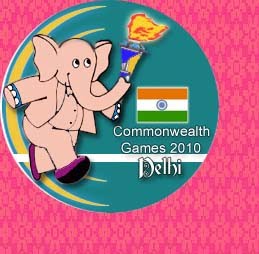 tball, Rugby 7s, Shooting, Squash, Table Tennis, Tennis, Wrestling , Weightlifting are all meant to bring the countries together to strengthen the relationships. The Commonwealth 2010 games held in India between 3rd October to 14th October 2010. The opening ceremony is scheduled to take place at the Jawaharlal Nehru Stadium, Delhi. New Delhi is preparing itself for commonwealth games by planning to improve its urban infrastructure as well as its sporting facilities.
tball, Rugby 7s, Shooting, Squash, Table Tennis, Tennis, Wrestling , Weightlifting are all meant to bring the countries together to strengthen the relationships. The Commonwealth 2010 games held in India between 3rd October to 14th October 2010. The opening ceremony is scheduled to take place at the Jawaharlal Nehru Stadium, Delhi. New Delhi is preparing itself for commonwealth games by planning to improve its urban infrastructure as well as its sporting facilities. By keeping in mind to show world best Commonwealth 2010 games, New Delhi is working very hard to achieve its following goals :
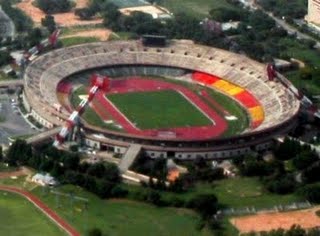
2) Improve city infrastructure.
3) Efforts to make Delhi ‘world-class’.
4) Improving transport system.
5) New Stadiums and renovation of existing stadiums.
6) Increase in roads and flyovers.
The time table for commonwealth games is given below :- OP - Opening Ceremonies and CL - Closing Ceremonies
Date | 3 | 4 | 5 | 6 | 7 | 8 | 9 | 10 | 11 | 12 | 13 | 14 |
Ceremonies | OP | . | . | . | . | . | . | . | . | . | . | CL |
Aquatics | . | . | . | . | . | . | . | . | . | . | . | . |
Archery | . | . | . | . | . | . | . | . | . | . | . | . |
Athletics | . | . | . | . | . | . | . | . | . | . | . | . |
Boxing | . | . | . | . | . | . | . | . | R | . | . | . |
Badminton | . | . | . | . | . | . | . | . | . | . | . | . |
Cycling | . | . | . | . | . | . | . | . | . | . | . | . |
Gymnastics | . | . | . | . | R | . | . | . | . | . | . | . |
Hockey | . | . | . | . | . | . | . | . | . | . | . | . |
Lawn Bowls | . | . | . | . | . | . | . | . | . | . | . | . |
Netball | . | . | . | . | . | . | . | . | . | . | . | . |
Rugby Seven | . | . | . | . | . | . | . | . | . | . | . | . |
Shooting | . | T | . | . | . | . | . | . | . | . | . | . |
Squash | . | . | . | . | . | . | . | . | . | . | . | . |
Table Tennis | . | . | . | . | . | . | . | . | . | . | . | . |
Tennis | . | . | . | . | . | . | . | . | . | . | . | . |
Weightlifting | . | . | . | . | . | . | . | . | . | . | . | . |
Wrestling | . | . | . | . | . | . | . | . | . | . | . | . |
In recent years sports events become more important among youths as well as old, They came forward to take parts to give full support to their nation team and encourage them to win. Today`s people become more enthu for such type of activity. The people also gave support to other nation teams which helps other nation to come closer in bringing nations strength. Sports attracts a large number of tourists to host city, which gave arose in investment and also boost tourism. The prospects of international travelers and tourists who will come to India during the period is already keeping India tourism and hospitality industry at its higher. Commonwealth Games 2010 are also being seen as a good opportunity for promoting India Tours among international tourists. India travel agents made special tour packages relating to Commonwealth Games 2010. The 2010 Games also presents an opportunity for India to showcase itself as a sporting and cultural nation and economic power. We think commonwealth Delhi surely makes history towards its success.
Thursday, October 01, 2009
Travel Agents India
T2india is an Indian Travel Agency and provides standard adventure tours and travel holidays services including tickets and domestic tour packages. Additional services include assistance with passport, a superior offering that includes access to better terrain and activities, accommodation and entertainment. The value added of T2india's offering is its knowledge and expertise, competitive rates and specialty focus on travel, which translates into increased satisfaction for the customers. So T2India is capable of handling your tour right from the planning phase and once you come to us, our team of experts from travel industry will guide you through your India tour.
T2india provides individual and group adventure travel to leisure and corporate clients. Services and products provided by travel agents India includes travel consultation, pre-arranged tours, custom packages, reservation for lodgings, car rentals etc. Thus T2India proves to be your reliable travel partner offering you all the services and guidance you would require in planning to make your tour memorable. Thus T2india remarkably proves to be best in its services offering you not a part of your tour but having expertise in handling right from planning of your tour according to your requirements to making each aspect of your adventure tours remarkable and unforgettable experience.
Our past experience in understanding and catering the needs of business travelers enables us to better understand the needs of a business traveler. We better understand every minute aspect of your tour so this peculiar feature sets us unique in our services.
Tour Operators India offers descriptive details with visuals which help you to visualize before you actually start with your tour. Apart from this we have commercial data for both travelers to carry tours in practical and economic way.
So if you have a thought of going for your next tour, you can rely on your complete tour partner and we will handle your tour with a commitment that it will be wonderful and memorable experience.
Monday, September 07, 2009
Bushwalking In Australia
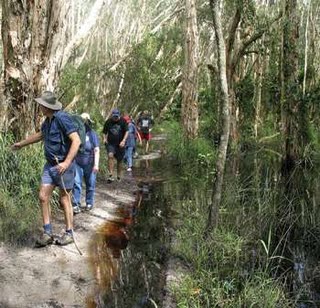 Bushwalking an ideal sport for those who seak adventure. Bushwalking is also known as hiking, or simply walking and enjoyed by those who love the outdoors. Australia a land of extraordinary beauty covered with vegetation, animals, birds, scenic beauty added more to its Bushwalking. Bushwalking is one of the major tourist attractions of Australia. Queensland, Tasmania , New South Wales and Victoria are among the favourite bush walking spots of Australia. If you went to Tasmania then March and April are ideal time to visit and If Victoria then April to June is the best suitable time. While walking through bush you can see the natural beauty of rainforests with large trees. Some people love to take bath in waterfalls come in the way of bushwalking. Also you can know here about the regions most popular flora and fauna while walking through trails. Dorrigo National Park has some finest track ideal for bushwalking having stunning views.
Bushwalking an ideal sport for those who seak adventure. Bushwalking is also known as hiking, or simply walking and enjoyed by those who love the outdoors. Australia a land of extraordinary beauty covered with vegetation, animals, birds, scenic beauty added more to its Bushwalking. Bushwalking is one of the major tourist attractions of Australia. Queensland, Tasmania , New South Wales and Victoria are among the favourite bush walking spots of Australia. If you went to Tasmania then March and April are ideal time to visit and If Victoria then April to June is the best suitable time. While walking through bush you can see the natural beauty of rainforests with large trees. Some people love to take bath in waterfalls come in the way of bushwalking. Also you can know here about the regions most popular flora and fauna while walking through trails. Dorrigo National Park has some finest track ideal for bushwalking having stunning views.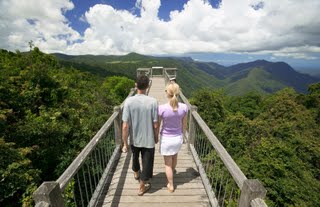 popular place for bushwalking. The climate is mainly tropical here. April to September is the best time to visit for Bushwalking. Some of the famous areas are Lamington National Park, Border Ranges, Carnarvon Gorge, Cooloola National Park, Sundown National Park, Girraween National Parks, Fraser Island, Boonoo National Park etc. Mt. Barney is the most impressive park for bushwalkers. This is the highest mountain in southern Queensland.
popular place for bushwalking. The climate is mainly tropical here. April to September is the best time to visit for Bushwalking. Some of the famous areas are Lamington National Park, Border Ranges, Carnarvon Gorge, Cooloola National Park, Sundown National Park, Girraween National Parks, Fraser Island, Boonoo National Park etc. Mt. Barney is the most impressive park for bushwalkers. This is the highest mountain in southern Queensland. Monday, August 31, 2009
The Blue lagoon
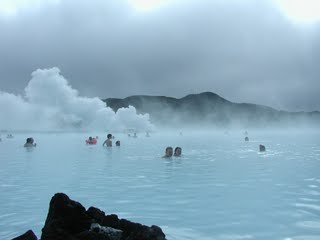 In recent years tourism is expanding taking a new shape of medical boom and is spreading throughout the world known as medical tourism. You can enjoy vacation and also could get medical treatment is the most attractive theme giving by travel agents to attract tourists.Iceland is one of the most popular medical tourist destination. Medical tourism is very popular in Iceland due to its large number of medical spa. And if somebody went to Iceland tour it is not complete until they visit Blue Lagoon. Blue lagoon is the most visited attraction in Iceland. You can enjoy vacation and also could get medical treatment here. It is most natural body of water.
In recent years tourism is expanding taking a new shape of medical boom and is spreading throughout the world known as medical tourism. You can enjoy vacation and also could get medical treatment is the most attractive theme giving by travel agents to attract tourists.Iceland is one of the most popular medical tourist destination. Medical tourism is very popular in Iceland due to its large number of medical spa. And if somebody went to Iceland tour it is not complete until they visit Blue Lagoon. Blue lagoon is the most visited attraction in Iceland. You can enjoy vacation and also could get medical treatment here. It is most natural body of water. 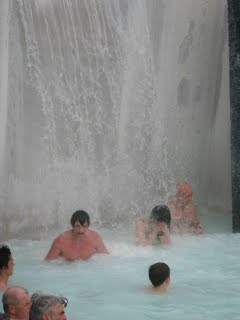 40 °C.whereas the temperature of water varies throughout the pool.Near the vents the water is hot at its peak.There is also a steam room,waterfalls,caves for more enjoyment.The lagoon is surrounded with lava rocks which makes water warm. After taking bath in lagoon you will feel your skin soft and relaxed. The water has curative powers. The Blue Lagoon holds six million litres of geothermal seawater, which is renewed every 40 hours. It is one of the most visited tourist attractions in Iceland and has recently won the 2009 Readers Spa Award as well as wining many other awards such as Blue Flag for Medical and Thermal Spa Facilities in the World and Environmental Awards. Blue Lagoon is only half an hour from Reykjavík and 20 minutes from Keflavík airport. A visit to Blue Lagoon definately change your hectic trip and you feel much fresh here.One should definately visit Blue Lagoon in his or her life and should experience some different atleast once in a life time.
40 °C.whereas the temperature of water varies throughout the pool.Near the vents the water is hot at its peak.There is also a steam room,waterfalls,caves for more enjoyment.The lagoon is surrounded with lava rocks which makes water warm. After taking bath in lagoon you will feel your skin soft and relaxed. The water has curative powers. The Blue Lagoon holds six million litres of geothermal seawater, which is renewed every 40 hours. It is one of the most visited tourist attractions in Iceland and has recently won the 2009 Readers Spa Award as well as wining many other awards such as Blue Flag for Medical and Thermal Spa Facilities in the World and Environmental Awards. Blue Lagoon is only half an hour from Reykjavík and 20 minutes from Keflavík airport. A visit to Blue Lagoon definately change your hectic trip and you feel much fresh here.One should definately visit Blue Lagoon in his or her life and should experience some different atleast once in a life time.Friday, August 21, 2009
Tuesday, August 18, 2009
Traveling and the Currency Exchange
Seasoned travelers use different strategies to exchange currency. Some travelers wait until they arrive at their destination before they even think about a currency exchange. On a two or three day trip that strategy might work, but for a holiday or an extended trip to another country that decision could be an expensive one. You usually have enough time to organize a trip and the exchange rate should be an important element in your plans. Waiting to exchange all your money at an airport location can create a number of surprises.
Let’s say you arrive in Delhi and want to exchange $1000 for Rupee. The last time you checked the exchange was favorable, but economic conditions have changed since then. The Dollar/Rupee trading pair moved 1300 points over the course of ten days and that change costs you an extra $130. Traveling internationally without exchanging money before your departure date could spell budget disaster. Exchanging small amounts of money while you’re planning the trip reduces the risk that is associated with a sudden shift in the exchange market. Averaging your exchanges also gives you an exact cost to use in your budget, so there are no surprises when you arrive at your destination. If you plan ahead you can avoid the stress that an unexpected currency rate shift can create and you’re able to implement a budget that is effective.
Where should I exchange money?
Most travelers assume that banks give the best rate of exchange. Banks charge a fee for every exchange and they may only post one rate a day and it may not be the current rate. Some travelers rely on credit cards to exchange money, which makes the credit card companies very happy. They use a their own rate which includes a profit and they add a surcharge on every travel purchase, so you never know how much you’re spending until you get the statement and by that time it’s too late to make adjustments. The best way to exchange money is through a reliable currency exchange broker. They can give you a real time rate, so you can average your trades and know up front how much each trade costs. Airport currency merchants can be used to exchange small amounts if the rate is in your favor, but it still may cost more than your average exchanges.
Other travel points
Some countries do put a limit on the cash you can carry. It’s a good idea to know that limit before you arrive. A random customs inspection may destroy the trip if custom officials confiscate your cash. Always carry cash in a hidden pocket or money belt that’s secure and out of sight. Purses and wallets should be used to carry small amounts for small purchases. Hotel safes and other security measures should be used when you arrive and common sense is your best security tool when you decide to use it.
Article submitted by ForexTraders.com:
Our experts analyze the currency market, so if you need additional information about forex trading, forex brokers or understanding currency pairs, please visit our website.
Monday, August 17, 2009
Bondi Beach
 Australia trip is incomplete without a visit to Bondi beach.Bondi Beach is one of the Australia's most famous beach. It is about one kilometre long. It is situated in Sydney’s Eastern suburbs, in New South Wales on the East coast of Australia.The beach is divided into yellow and red flags for swimmers.It is one of the main tourist spot of Australia. It is a sandy beach and very popular among tourists. Bondi Beach is the third most visited site in Sydney after the Opera House and the Harbour Bridge. Bondi Beach was added to the Australian National Heritage list in 2008.
Australia trip is incomplete without a visit to Bondi beach.Bondi Beach is one of the Australia's most famous beach. It is about one kilometre long. It is situated in Sydney’s Eastern suburbs, in New South Wales on the East coast of Australia.The beach is divided into yellow and red flags for swimmers.It is one of the main tourist spot of Australia. It is a sandy beach and very popular among tourists. Bondi Beach is the third most visited site in Sydney after the Opera House and the Harbour Bridge. Bondi Beach was added to the Australian National Heritage list in 2008.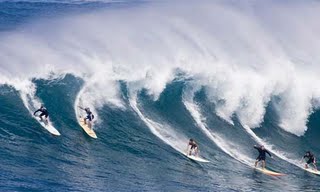 ng is done on the southern end of the beach. You should visit Bondi during the annual City of Surf Fun Run when thousands of runners reach to Bondi Beach. It is the most crowded event took place here and a large number of visitors come here to enjoy this amazing event.It is also a popular place amongst runners, skaters and cyclists. The beach is also a stunning place to walk during summer. Bondi has an relaxed atmosphere and ideal location for surfing. The water of the beach is so clear. The beach is moon shaped bay full of white sands which adds more to its beauty.
ng is done on the southern end of the beach. You should visit Bondi during the annual City of Surf Fun Run when thousands of runners reach to Bondi Beach. It is the most crowded event took place here and a large number of visitors come here to enjoy this amazing event.It is also a popular place amongst runners, skaters and cyclists. The beach is also a stunning place to walk during summer. Bondi has an relaxed atmosphere and ideal location for surfing. The water of the beach is so clear. The beach is moon shaped bay full of white sands which adds more to its beauty.Visiting India`s Golden Triangle
India`s famous `Golden Triangle` takes in three of the country`s most breathtaking and exciting cities - the capital, Delhi; along with Agra and Jaipir. Together, they form a rich and culturally diverse experience that takes in exquisitely-crafted architecture, fascinating history and culture, colourful wildlife and delicious cuisine. The cities all lie within a radius of 250 kilometers of one another and travelling between them provides and opportunity to take in the landscapes of this captivating country.
Buzzing Delhi is an explosion of sight and sound that combines fascinating local cultures with the sophistication of a modern metropolis. Split into New Delhi and Old Delhi, the city is home to sights such as the India Gatre, Red Fort and the Raj Ghat and boasts hotels and restaurant to suit every taste and every pocket. Less than 200 kilometers from here lies the Sariska Sanctuary, where jeep tours allow visitors to view all manner of beautiful birds and animal, including magnificent Indian tigers.
At Agra, meanwhile, visitors will find themselves in an opulent city that was the capital of the Mughal Emperors during the years 1526 to 16 58. The city is home to many spectacularly beautiful buildings, the most famous of which is the legendary Taj Mahal - one of the Seven Wonders of the World. Built for the emperor Shah Jahan in memory of his wife, it is undoubtedly one of the world`s best-known buildings. The city is home to many other architectural wonders, not the least of which are Fatehpur Sikri and Agra Fort, both of which are UNESCO World Heritage Sites. Ask your tour guide or holiday operator for details of local festivals and events, as these are riots of music, costume and dance and will leave a lasting memory of your holiday in beautiful India.
The colourful city of Jaipur is a great place to soak up the local culture and will provide travel memories to last a lifetime. Here, visitors can stroll through beautifully designed and maintained parks and gardens, take in imposing forts and historic monuments and even take a ride on board an elephant or camel. Known as the `Pink City` in India, the city boasts striking coloured buildings many of which date back to 1727 - the year Jaipur was founded by the Maha Raja Sawai Jai Sing II. Among the sights that can`t be missed on a visit to Jaipur are the City Palace, Hawa Mahal, Jantar Mantar and the Hawa Mahal - or Palace of the Winds. The city`s bazaars are a right of colour, sound and smell and are a great way to pick up local handicrafts and artisan pieces as mementoes of your Golden Triangle adventure.
Take a rickshaw ride through the city during the afternoon or evening to see Jaipur at its liveliest, with street sellers hawking their colourful wares on every corner and the lively local shops and restaurants all open for business.
Nature lovers shouldn`t miss a visit to Bharatpur, which is home to Keoladeo Ghana Bird Sanctuary. The dense woodlands and shallow waters of this wildlife sanctuary are home to countless numbers of birds, many of which are native to India while others are migratory birds that have made their way here from Central Asia and Siberia.
With so much to take in by way of culture, architecture, tradition and wildlife, why not visit last minute holidays to book your Golden Triangle adventure?
Thursday, July 30, 2009
Felucca on the Nile
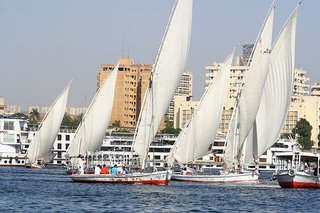 Feluccas are the traditional sailboats used for sailing along the Nile in Egypt.This is a type of lateen sail boat that carries passengers along the River Nile.It is a wide riverboat with a flat, open deck covered with soft mattresses and has a canopy which provide shade from the sun. The felucca has remained, over the centuries, the primary transportation of the Nile. Egypt is blessed with southerly wind that pushes sailboats upriver, while allowing them to return on its current downstream. A large tiller is used for steering and you can also find a large amount of storage space under the deck.The crew members provide you with Nubian foods and can have Breakfast, lunch and dinner while enjoying the true beauty of Nile.You can also get flavours of Egyptian tea and Nubian cake.These Feluccas are run by locals called Nubians and the ships were also filled with Nubia
Feluccas are the traditional sailboats used for sailing along the Nile in Egypt.This is a type of lateen sail boat that carries passengers along the River Nile.It is a wide riverboat with a flat, open deck covered with soft mattresses and has a canopy which provide shade from the sun. The felucca has remained, over the centuries, the primary transportation of the Nile. Egypt is blessed with southerly wind that pushes sailboats upriver, while allowing them to return on its current downstream. A large tiller is used for steering and you can also find a large amount of storage space under the deck.The crew members provide you with Nubian foods and can have Breakfast, lunch and dinner while enjoying the true beauty of Nile.You can also get flavours of Egyptian tea and Nubian cake.These Feluccas are run by locals called Nubians and the ships were also filled with Nubia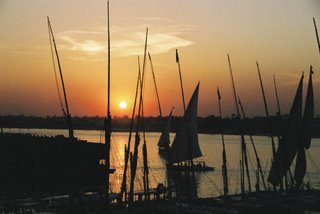 n culture, with all the meals prepared on the ship by the captains.We watch rural Egyptian life while passing down the Nile.Whether you’re looking for something cultural, or just a relaxing time on the water, consider a felucca ride in Egypt. All the historical and cultural destinations are located along the banks of the Nile River and going on a sight-seeing by the felucca is an experience worth cherishing. Tourist can move leisurely across the water while viewing the papyrus, Palmyra, quaint hamlets ,various birds, cattle and fishermen. During evening you can spend time watching the magn
n culture, with all the meals prepared on the ship by the captains.We watch rural Egyptian life while passing down the Nile.Whether you’re looking for something cultural, or just a relaxing time on the water, consider a felucca ride in Egypt. All the historical and cultural destinations are located along the banks of the Nile River and going on a sight-seeing by the felucca is an experience worth cherishing. Tourist can move leisurely across the water while viewing the papyrus, Palmyra, quaint hamlets ,various birds, cattle and fishermen. During evening you can spend time watching the magn ificent Egyptian sunsets,and take a good sleep under the stars. The most romantic time is the evening time ,when you can relaxed with your loved ones while enjoying the sunset.This is the perfect short trip if you want to enjoy the best of Egypt`s adventure Tour. Felucca rides can be enjoyed in towns like Cairo,Luxor,Aswan etc where there are easy to find the main riverfront streets.Feluccas are interesting because they sail throughout the waters in the heart of Cairo and the scenery become nice during evening.A felucca sail provide you with a glimpse of people,culture and lifestyles of Egypt which makes Egypt one of the most fascinating country.
ificent Egyptian sunsets,and take a good sleep under the stars. The most romantic time is the evening time ,when you can relaxed with your loved ones while enjoying the sunset.This is the perfect short trip if you want to enjoy the best of Egypt`s adventure Tour. Felucca rides can be enjoyed in towns like Cairo,Luxor,Aswan etc where there are easy to find the main riverfront streets.Feluccas are interesting because they sail throughout the waters in the heart of Cairo and the scenery become nice during evening.A felucca sail provide you with a glimpse of people,culture and lifestyles of Egypt which makes Egypt one of the most fascinating country.Wednesday, July 22, 2009
VELLAM KALI-SNAKE BOAT RACE
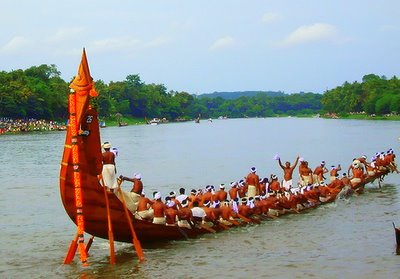
When a friend came back from her vacation in Kerala, she was much too excited! Not only about the God’s own country Kerala and its beautiful natural surroundings, but the various cultural events she witnessed there. The Snake boat race was one of the many such local events which she had witnessed there. The name snake boat rose my curiosity…
Only later I came to know that the name “Snake Boat Race” comes with the shape of the boats which are used during the race and the actual name is the Nehru Trophy boat race. One of the most famous local events which attracts the people from all over the world to witness it. These boat races are the part of Kerala culture. For any good event, for any religious event a boat race is organized in this area of Kerala.
The Nehru troph
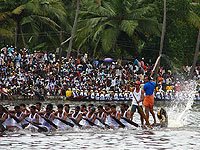 y has a different story behind it though. As it was the tradition of the Keralites, they had welcomed the first prime minister of India, Pandit Jawaharlal Nehru, on his visit to Kerala. It was his first visit way back in 1952. Pandit Nehru was so thrilled with the performance of the rowers and the whole excitement that it created, that he declared a rolling trophy for the winner, and since then this event is being held annually with the trophy named after the prime minister.
y has a different story behind it though. As it was the tradition of the Keralites, they had welcomed the first prime minister of India, Pandit Jawaharlal Nehru, on his visit to Kerala. It was his first visit way back in 1952. Pandit Nehru was so thrilled with the performance of the rowers and the whole excitement that it created, that he declared a rolling trophy for the winner, and since then this event is being held annually with the trophy named after the prime minister.It is said that long back the ruler of the area developed these boats so that his warriors had an easy time navigating in between the back waters during the wars. The boats did help. Since then every pious event or any celebration was commemorated with a game using these boats which e ventually culminated into races. The locales call it the Vallam kali in native language, meaning the boat game.
The boats are made up of Anjali thadi, a local forest wood. Today every village that participates in the race has its own prized boat and it is taken care of very devoutly. The boats are cleaned and rubbed and scrubbed. Then they are coated with oil and eggs for a smooth sail in the waters. The rowers of the boat are heroes of the village, and if they are the winners then they are worshipped!
These races are normally held in the area of Allapuzhha, in the Punnamada lakes or the back waters of Allapuzhha and are held between the months of July to September. Allapuzhha or Alleppey as it is known, is an hours distance from the commercial capital of Kerala, Kochi and about three hours from the beautiful Kumarakom.
The snake boat race has many records to its credit.
• It is a sport event having the highest number of team members in a single team.
• It is the biggest water vessel used for sports purpose.
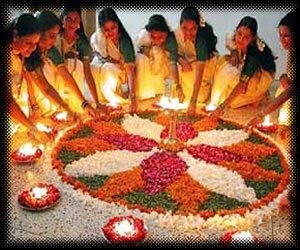
The 100-120 feet long canoes is manned by four helmsmen, 25 cheerers /singers and 100-125 oarsmen, who row in unison to the fast rhythm of `vanchipattu'or boatmen's song. The boat moves like a snake through the channels and definitely is an eye catching sight for any tourist.
Every year lots of tourists throng the place to view this exciting event and also see the beauty of the state along with it. This year the boat race happens on 08th of August 2009. There are many packages that one can choose from to witness this event and add on the visit to rest of the Kerala. So for a cultural and festive thrill one should definitely experience this Boat race.
Thursday, July 02, 2009
Solar Eclispse: the fascinating celestial event
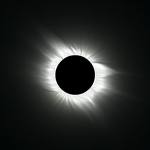 ttracted to this celestial event which takes place due to the specific positions of the Sun and the Moon. It was always a story for these kind of celestial events told by the grandparents and we believed them often than not.
ttracted to this celestial event which takes place due to the specific positions of the Sun and the Moon. It was always a story for these kind of celestial events told by the grandparents and we believed them often than not.In the earlier days people used to donate many a things after the eclipse in India. Especially, because the occurrence of eclipse meant that a mythological demon called Rahu would d
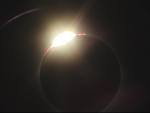 evour the Sun god and hence the star disappeared for some time. Why did the demon let go the sun god after some time is however not known!! Though we were put up in Mumbai, after every small or big Solar or Lunar eclipse , beggars would come out asking for alms and people would donate voluntarily. There was no question of not believing the mythology!
evour the Sun god and hence the star disappeared for some time. Why did the demon let go the sun god after some time is however not known!! Though we were put up in Mumbai, after every small or big Solar or Lunar eclipse , beggars would come out asking for alms and people would donate voluntarily. There was no question of not believing the mythology!It was only during that first time that dad explained us the actual phenomenon with dra
 wings and it took me by surprise. I desperately wanted to see it… but it was not be visible from Mumbai. Even then there were solar protective sun glasses being sold in the markets and I had insisted we buy it. May be it was a Sunday, or I had missed my school, my sister and I were at home. The television had for the first time in my memory had a whole day programme, with flashes of the eclipse taking place.
wings and it took me by surprise. I desperately wanted to see it… but it was not be visible from Mumbai. Even then there were solar protective sun glasses being sold in the markets and I had insisted we buy it. May be it was a Sunday, or I had missed my school, my sister and I were at home. The television had for the first time in my memory had a whole day programme, with flashes of the eclipse taking place.It is now known that a Solar eclipse occurs when the moon passes between Earth and Sun. If the moon's shadow happens to fall upon Earth's surface at that time, then we see some portion of the Sun's disk covered or 'eclipsed' by the Moon. The partial and the total eclipses depend on the distance between the earth and moon.
The next Total Solar eclipse to be visible from India was about 15 years ago in 1995 and many places in India were to witness that. This time I had to see it and luckily enough, it was to be visible nearby from Delhi. We hunted for the Solar glasses in Delhi but they were not to be found. Delhi seemed to be most apathetic towards the event. At the same time there was exposure boom about the event and its accessories in Mumbai and Kolkata.
We hit the road late in the night to watch the event which was supposed to take place early in the morning. It was the time just after the festival of Diwali, hence the weather was pleasantly ch
 illy. We head straight on to Fatehpur Sikri, near to Agra, as that was the place we decided to view it from. The wait was annoying… but when the event took place… it was the most beautiful site that I could think of!
illy. We head straight on to Fatehpur Sikri, near to Agra, as that was the place we decided to view it from. The wait was annoying… but when the event took place… it was the most beautiful site that I could think of!The time has come once more and I still long to witness that once in a lifetime event. This time too it shall be viewed early in the morning. The nearest place to Delhi for this is Bhopal and the other is Varanasi. However this time the time – span is 3 minutes and due to the rainy season, people are doubtful of its viewing. But many cities in India shall be able to witness this celestial event on 22 July 2009. Baroda, Indore, Gaya, and then going into north east India with Dibrugarh and then in to China, it will be viewed in huge number. China will have the maximum siting time of about 5 minutes and the time will be perfect, during noon.
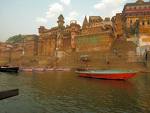 It should be a great site watching it from the Ganges, and you may also see the hindu rituals that take place after the eclipse is over.
It should be a great site watching it from the Ganges, and you may also see the hindu rituals that take place after the eclipse is over.Do not miss this if possible. For the accessories you are sure to found in any of the planetariums in your city. The importance is that this shall be probably the last Total Solar eclipse that you can view and that too falling in the International year of Astronomy and 400th anniversary year of the telescope founded by Galileo.
